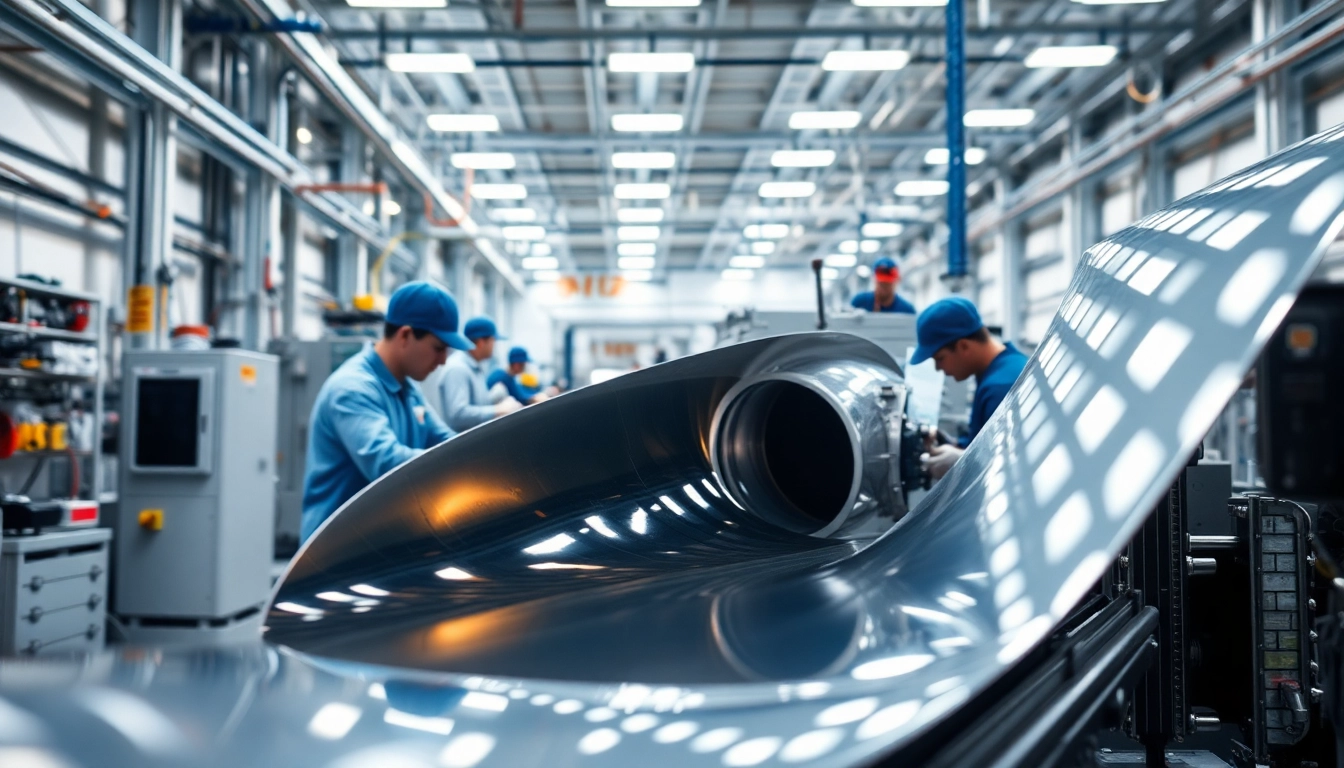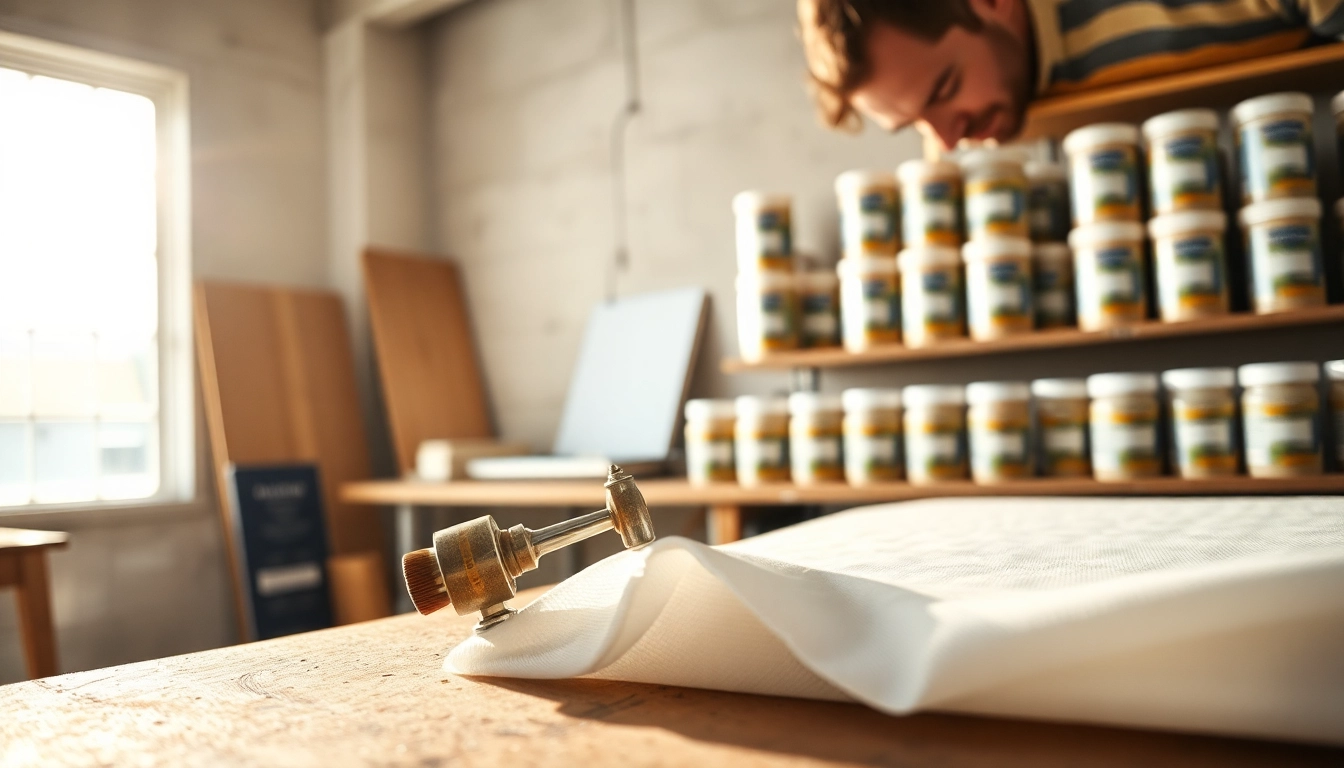Understanding Adhesive Films: Benefits and Applications
Adhesive films have revolutionized the bonding landscape across various industrial sectors. These innovative products are engineered to provide clean, consistent, and robust bonding solutions. If you’re keen on exploring the world of adhesives, take a closer look at the adhesives films, which offers extensive insights into these essential materials.
What Are Adhesive Films?
Adhesive films are designed as solid layers of adhesive that are bonded to a carrier film. They are developed to be ready to bond surfaces when activated through methods such as heat or pressure. Unlike traditional adhesive systems, adhesive films deliver multiple advantages, including high strength, cleanliness, and consistency across applications.
Key Advantages of Using Adhesive Films
- Clean Application: Adhesive films offer a mess-free option, eliminating excess adhesive that can create waste or complicate the application process.
- Consistent Thickness: The uniform thickness of adhesive films ensures reliable bond performance, reducing variability in joint strength.
- Environmentally Friendly: Many adhesive films are designed to be less harmful to the environment than traditional liquid adhesives, with lower volatile organic compound (VOC) emissions.
- Lightweight Solutions: Many adhesive films are lightweight, contributing to the reduction of overall material weight in various applications, especially in aerospace and automotive industries.
- Improved Performance: The ability to withstand high temperatures, humidity, and other environmental factors enhances the durability and longevity of the bond.
Industries Utilizing Adhesive Films
Adhesive films find applications across a multitude of sectors, including:
- Aerospace: Used in composite bonding to ensure structural integrity and lightweight designs.
- Automotive: Essential for bonding various components while adhering to strict industry standards for safety and performance.
- Electronics: Play a critical role in assembling and protecting delicate components.
- Defense: Used for high-performance applications requiring exceptional reliability and strength.
Navigating the Options: Types of Adhesive Films
With a variety of adhesive films available, understanding the specific characteristics of each type is crucial to making informed decisions based on application requirements.
Film Thickness and Design Considerations
The thickness of an adhesive film significantly influences its performance. Thinner films generally conform better to surface irregularities, while thicker films may provide enhanced strength. When choosing the right film, consider:
- Application Specificity: Thicker films may be needed for high-stress applications, while thinner variants are ideal for more sensitive tasks.
- Surface Profile: Evaluate whether the surfaces to be bonded are smooth or irregular; different thicknesses might be needed for optimal contact.
Temperature and Chemical Resistance Factors
Every adhesive film is manufactured with specific resistance properties concerning temperature and chemicals. Here are some considerations:
- Temperature Tolerance: Understand the temperature range of your application; some films are designed to withstand extensive heat, while others are not.
- Chemical Compatibility: Ensure the adhesive film can resist the chemicals it may encounter throughout its lifecycle.
Choosing the Right Film for Your Application
Determining which adhesive film to use requires careful consideration of application requirements, like bond strength, exposure to environmental elements, and flexibility. Consulting with technical experts from adhesive film manufacturers can help you make the best choice.
Application Techniques for Adhesive Films
Proper application techniques are essential to maximizing the effectiveness of adhesive films. Following best practices can significantly enhance the bonding process.
Surface Preparation Best Practices
Quality surface preparation is crucial for achieving strong bonds. Key practices include:
- Cleaning: Remove any dust, oil, or contaminants from the surfaces to ensure optimal adhesion.
- Drying: Ensure surfaces are dry before applying the adhesive film to prevent moisture from compromising the bond.
- Roughening: For some applications, lightly roughening the surface can significantly improve mechanical bonding.
Activation Methods: Heat vs. Pressure
Adhesive films can typically be activated through heat or pressure, or a combination of both. More details on these methods include:
- Heat Activation: Applying heat can facilitate bonding, especially when working with thermoset adhesives.
- Pressure Activation: Utilizing pressure is essential for ensuring intimate contact between surfaces and the adhesive film.
Common Mistakes to Avoid During Application
To maximize bond performance, avoid the following common mistakes:
- Inadequate Surface Preparation: Skipping cleaning and preparation steps can lead to poor bonding.
- Incorrect Activation: Applying insufficient heat or pressure can compromise the bond strength.
- Excessive Handling: Extended exposure of the adhesive film to open air can lead to contamination or degradation of the adhesive properties.
Performance Metrics: Evaluating Adhesive Film Effectiveness
Evaluating the performance of adhesive films requires specific metrics that can determine their effectiveness under various conditions.
Testing for Bond Strength and Durability
Testing methods such as peel and shear strength tests are essential to determine the adhesive film’s bond strength. In practice, procedures may include:
- Peel Tests: Assess the force required to separate bonded materials.
- Shear Tests: Evaluate how much load the adhesive film can handle before failure.
Assessing Environmental Impact on Adhesive Performance
Understanding how environmental factors like temperature, humidity, and exposure to chemicals affect adhesive films is critical in evaluating their overall performance. Consistent testing under varied conditions can yield insights into durability and reliability.
Customer Feedback and Case Studies
Gathering data from existing applications through customer feedback and case studies can provide real-world insights into the effectiveness of adhesive films. Analysing this information allows manufacturers and end-users to gauge expected performance levels.
Future Trends in Adhesive Film Technology
The adhesive film market is poised for evolution, driven by advancements in technology and material sciences. Future trends are expected to center around innovation and eco-friendly practices.
Innovations in Material Science
Continued research in material sciences is leading to the development of advanced adhesive films that provide enhanced performance across various applications. This includes:
- Hybrid Films: The emergence of hybrid films that leverage different adhesive chemistries to improve functionality.
- Tailored Properties: Custom formulations to suit specific customer needs, enhancing the film’s adaptability.
Smart Adhesives and What They Offer
Smart adhesive technologies are under development, integrating sensors that can provide data on bond integrity or environmental conditions affecting the adhesive. This innovation can lead to advanced monitoring capabilities, increasing safety and long-term performance prediction.
Sustainability Practices in Adhesive Film Manufacturing
The demand for sustainability continues to shape the adhesive industry. Practices such as using recycled materials, low-VOC formulations, and energy-efficient production methods are becoming standard in adhesive film manufacturing. This trend not only meets regulatory demands but also aligns with global sustainability goals.



